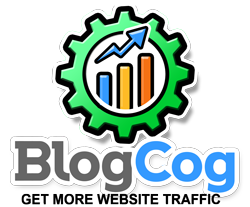
A Step-by-Step SEO Checklist for Launching a New Website in 2026: Your Ultimate Guide to Skyrocketing Google Rankings
Share
Let's take a fresh look at what's possible when you launch a new website in 2026. SEO isn't just a buzzword—it's the secret sauce that can transform your site from a digital ghost town into a bustling hub of activity. But before you dive into the world of keywords and backlinks, let's ensure your website is built on a solid SEO foundation.
Launching a new website is like opening a new store in a busy city. You wouldn't want to open your doors without a sign, right? That's where SEO comes in. It's your digital signpost, guiding visitors to your site. But just like a sign needs to be visible and clear, your SEO needs to be well-structured and effective. Here's your ultimate step-by-step SEO checklist to ensure your new website in 2026 gets the attention it deserves.
1. Set Up the Essentials
Before you start optimizing content, ensure your website is accessible to search engines:
- robots.txt: This file tells search engines which pages to crawl and which to avoid. Ensure it's configured correctly to prevent blocking important pages.
- Google Search Console: Set up a new property if it's a new domain. This tool helps monitor your site's presence in Google Search.
- Google Analytics 4 (GA4): Install tracking codes on your site to gather data on user interactions and traffic sources.
- XML Sitemap: Create and submit an XML sitemap to search engines to help them discover and index your pages efficiently.
- SSL Certificate: Secure your site with HTTPS to build trust with users and improve rankings.
2. Perform Keyword Research
Identify the terms your target audience is searching for:
- Google Keyword Planner: Use this free tool to find keyword ideas and assess their search volume.
- Long-Tail Keywords: Focus on specific phrases that are less competitive and more likely to convert.
- Search Intent: Understand the purpose behind the search queries to create content that meets user needs.
3. Optimize On-Page Elements
Ensure each page is optimized for both users and search engines:
- Title Tags: Include primary keywords and keep them under 60 characters.
- Meta Descriptions: Write compelling descriptions under 160 characters to encourage clicks.
- Header Tags (H1, H2, H3): Use these to structure your content and include relevant keywords.
- URL Structure: Keep URLs short, descriptive, and include target keywords.
- Alt Text for Images: Describe images accurately to improve accessibility and SEO.
4. Ensure Mobile-Friendliness
With mobile-first indexing, it's crucial your site is responsive:
- Responsive Design: Ensure your site adapts to different screen sizes and devices.
- Mobile Usability: Test for issues like clickable elements being too close together or content wider than the screen.
5. Improve Site Speed
Fast-loading sites provide better user experiences and rank higher:
- Image Optimization: Compress images to reduce load times without sacrificing quality.
- Minify CSS, JavaScript, and HTML: Remove unnecessary characters to speed up your site.
- Leverage Browser Caching: Store certain elements in users' browsers to speed up repeat visits.
- Use a Content Delivery Network (CDN): Distribute content across various servers to improve load times globally.
6. Implement Structured Data
Help search engines understand your content better:
- Schema Markup: Add structured data to your pages to enhance search engine results with rich snippets.
- JSON-LD Format: Use this format for adding schema markup as it's recommended by Google.
7. Set Up Backlink Strategy
Build authority and trust with quality backlinks:
- Guest Blogging: Write articles for reputable sites in your industry.
- Directory Listings: Submit your site to relevant business directories.
- Social Media Sharing: Promote your content on social platforms to increase visibility.
8. Monitor and Analyze Performance
Track your site's performance and make necessary adjustments:
- Google Search Console: Monitor indexing status, search queries, and crawl errors.
- Google Analytics 4 (GA4): Analyze user behavior, traffic sources, and conversion rates.
- Core Web Vitals: Track metrics like loading performance, interactivity, and visual stability.
By following this comprehensive SEO checklist, you'll set your new website up for success in 2026. Remember, SEO is an ongoing process, so continue to monitor, analyze, and optimize to maintain and improve your rankings.
For more tips on boosting your website's SEO, check out BlogCog's Why Blogs page and explore our BlogCog Services Summary.
Related Posts:
- What Is Technical SEO and Why Does It Matter? Unveiling the Secrets to Boosting Your Google Rankings
- How to Hack the 'Recency Bias' for Trending Keywords and Boost Your SEO Game!
- The 'Skyscraper Technique' is Dead: What's the Modern Replacement? Why SEO Needs a Fresh Approach Now More Than Ever
- How to Prepare for 'Google Brain' (Fully Autonomous Search): Future-Proof Your SEO Strategy Today
- Guest Posting for SEO: How to Do It Right in 2025 – The Ultimate Guide to Boosting Your Rankings and Building Authority
